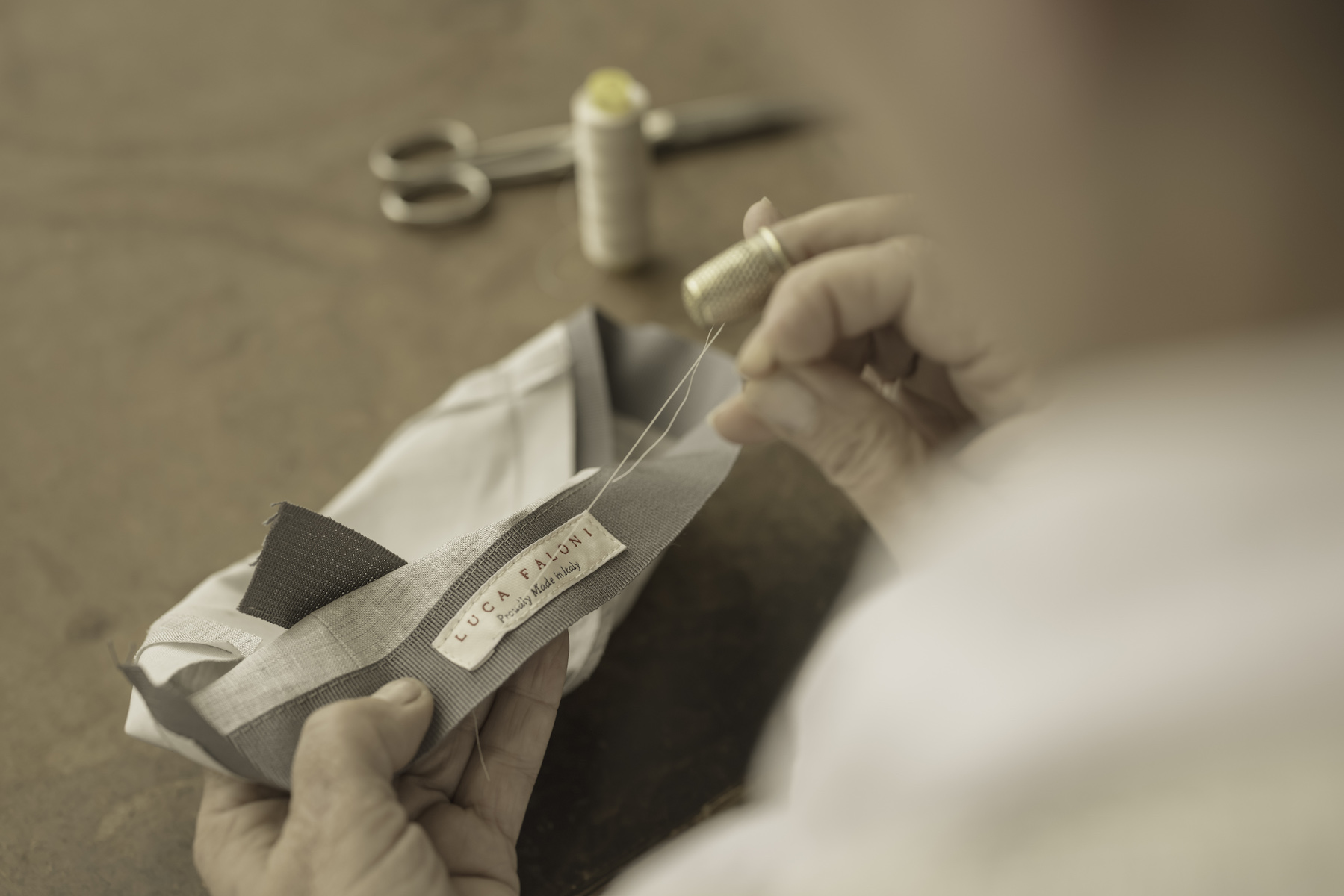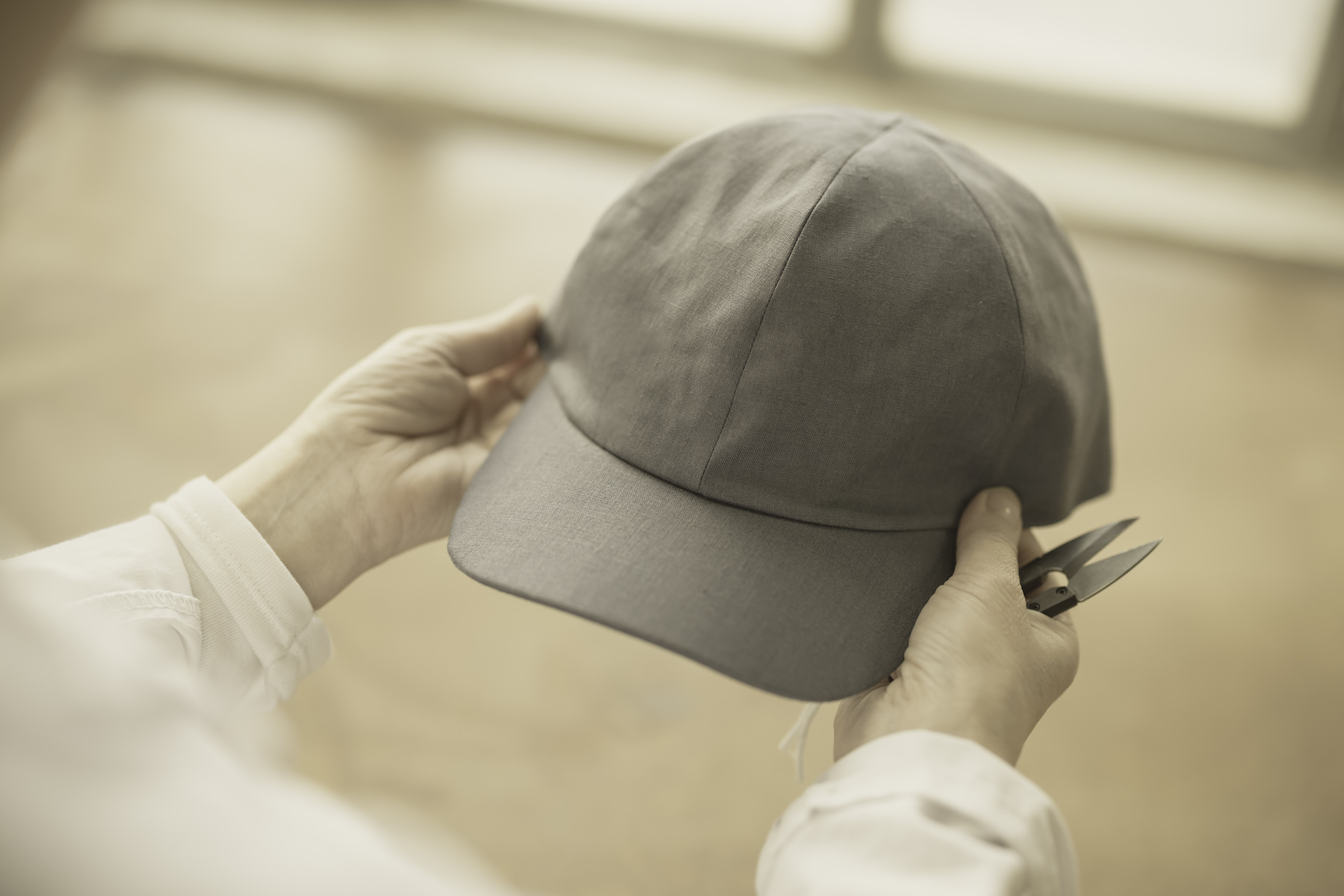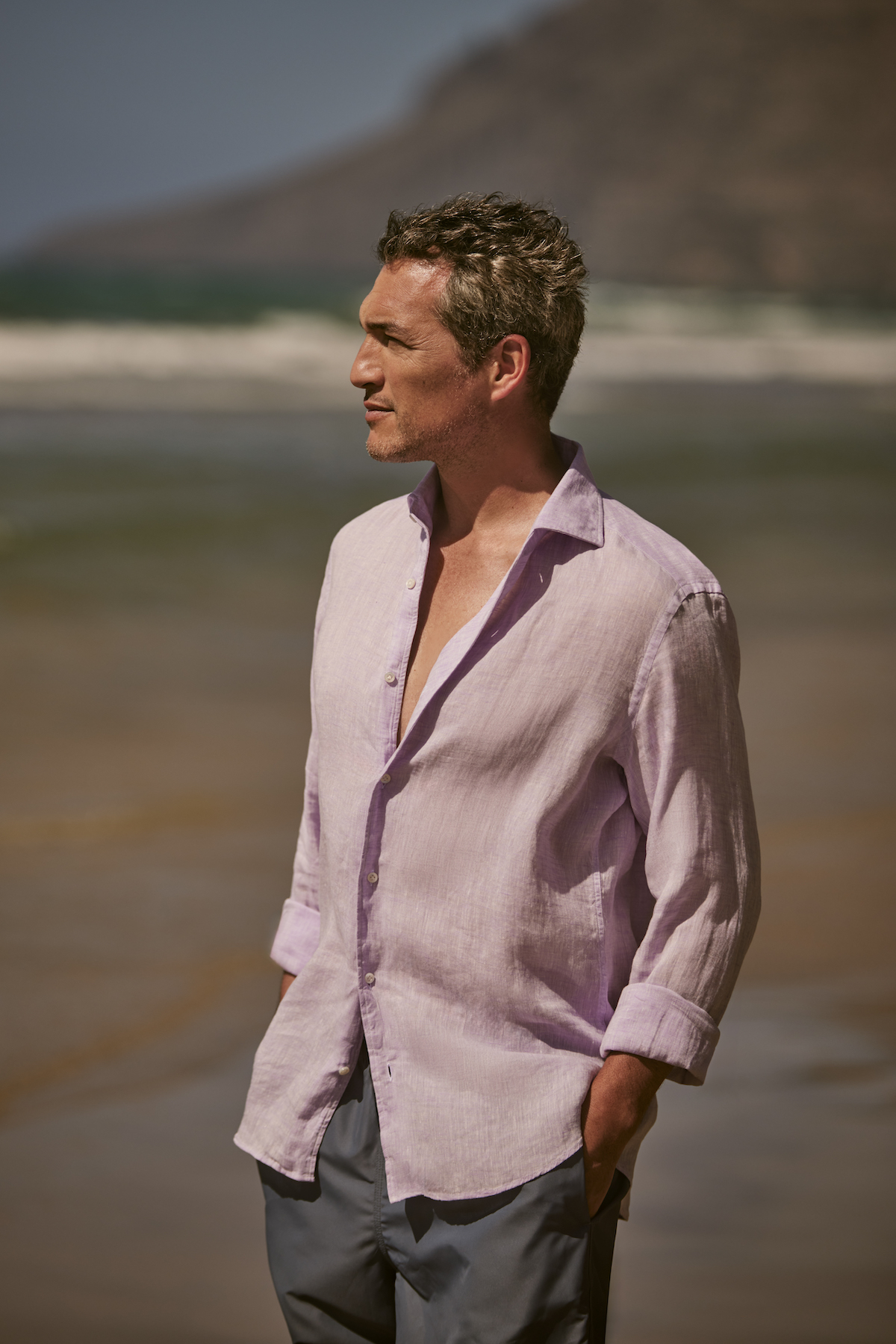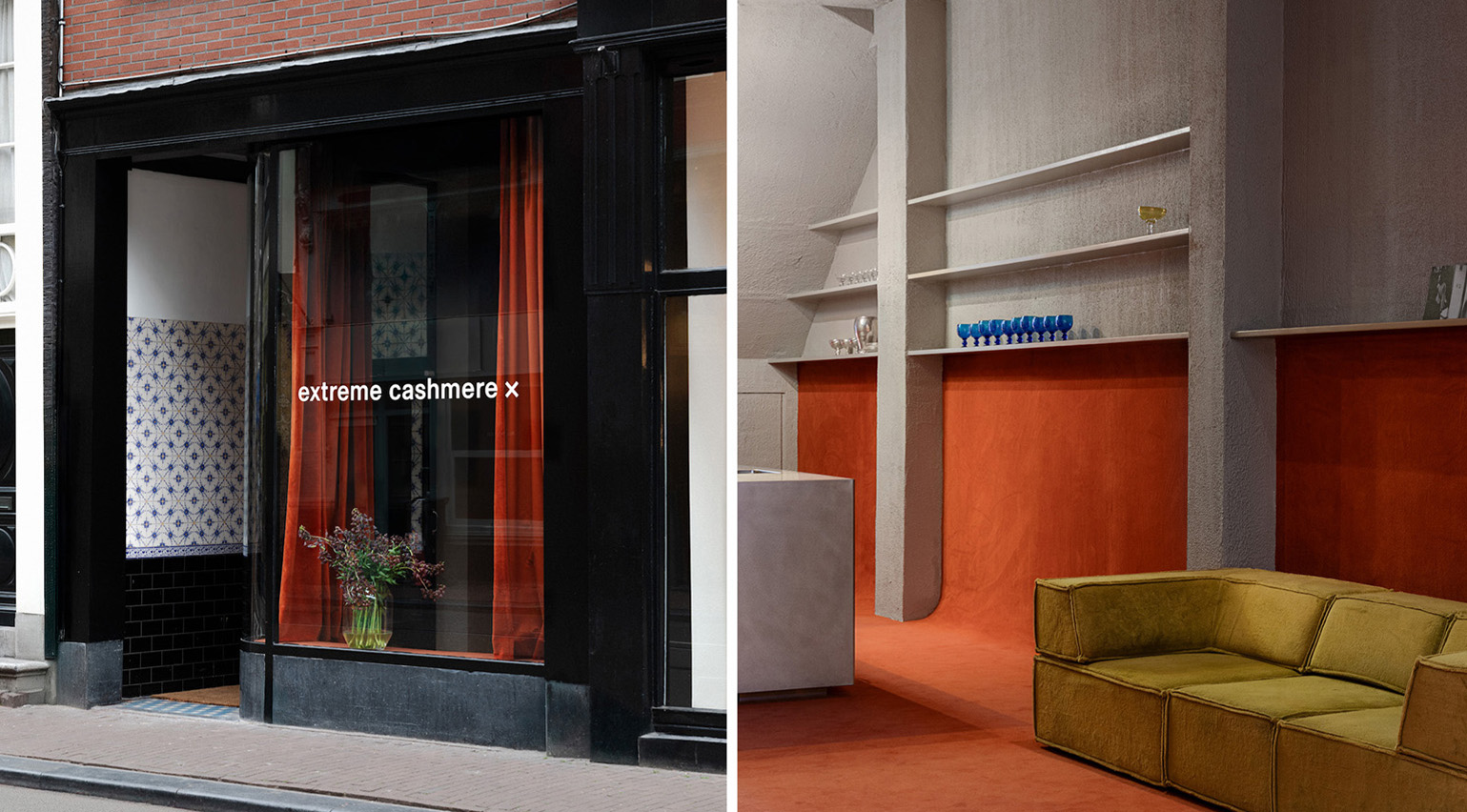‘Craft is a cornerstone of Italian culture’: Luca Faloni on creating the perfect linen shirt
Italian designer Luca Faloni speaks to Wallpaper* about the craft behind his latest linen collection, which spans shirts, tailoring and baseball caps, with each one designed to get better with age

The journey for one of Luca Faloni’s linen shirts begins in the flax fields of Normandy, northern France, though, as the designer asserts, they are 100 per cent Italian in their construction. ‘[Normandy] has the perfect climate for growing flax, which is widely known to be where the best linen in the world comes from,’ says Faloni, who founded his eponymous label in 2014. ‘[But] the textile itself is manufactured in Northern Italy by Albini, one of the oldest textile producers in Italy and makers of the best linen fabric in the world.’ As such, each piece is stamped with ‘Proudly Made in Italy’, the foundational principle of the label.
Faloni, who was born in Turin, Italy, worked as a business consultant at Bain & Co in San Francisco when he decided to leave to begin the brand, which is based on the philosophy of Italian craft he remembers surrounding him while growing up. Ten years later, he has amassed a global following – stores have opened in New York, Miami, Munich, Zurich, Milan and Stockholm, while a Paris opening is on the cards for later this year – largely down to his discreetly elegant wardrobe, which focusses on generational artisanal craft in the so-called noble fabrics of cashmere, silk and virgin wool.
The story behind Luca Faloni’s summer linens

‘For centuries, the artisan craft industry has been a cornerstone of Italian culture,’ Faloni tells Wallpaper*. ‘Different regions specialise in different products; Marche for footwear, Veneto for jackets, Lombardia for shirts, Piemonte for textiles, et cetera, which led to Italy’s global reputation as the pinnacle of craftsmanship,’ he says. ‘There was also a longstanding tradition of people following the same career path as their parents; however, this has sadly decreased for a number of reasons, including brands and companies moving their production out of Italy. As a result, many workshops have had to close or reduce their employee numbers and I feel really passionate about protecting the industry and these artisans.’
Linen was one of the foundational fabrics of Luca Faloni, alongside cashmere. Part of this was down to the fabric’s sustainable credentials – the flax crop using far less water than its cotton counterpart – as well as its synonymy with Italian sprezzatura and ease. ‘I firmly believe that every company, especially a luxury clothing brand, should be considering their impact on the environment from the moment of launch,’ says Faloni. ‘Linen was one of the very first categories we launched, partly for this reason. [Then], as you build the brand, you learn more about the materials, until you arrive at the perfect version. Once we had mastered linen shirts, we moved into other fabrics.’

That said, Faloni’s linen collection also continues to expand, providing a comprehensive wardrobe for summer’s warmer days. There is an array of linen shirts, of course, but also linen suits, shorts, baseball caps, polo shirts and linen-jersey T-shirts in hues from coral and marine green to classic cream, white and navy. Of why he thinks linen is the perfect fabric for the season, he cites how it’s ‘lightweight and breathable so it keeps you cool and dries quickly when wet’, while for travel, Luca Faloni linen has a slight stretch to prevent creasing (‘which I know is the reason people are put off buying linen’, says Faloni). ‘The more you wear linen the softer it becomes, so only improves with age. I have linen shirts in my wardrobe I have been wearing since I first launched the brand a decade ago.’
In terms of design, Faloni favours the deceptively simple. ‘[In] what at first glance may look like “just” a linen shirt, there are lots of considered design details,’ he says. ‘For example, our Portofino shirts have a “Paramontura” collar, which has become a brand signature. The collar is made from one piece of material so it is much more stable and less likely to curl at the edges, which I personally hate,’ he continues, noting that Luca Faloni linen shirts take almost ‘twice the time to construct than the average’. ‘We use Australian mother-of-pearl buttons, which are the best in the world, and giglio stitching, which is a signature of fine shirting but much more complex than regular stitching.’

As for his favourite piece, he admits it’s ‘hard to choose’. He settles on the brand’s linen suit and baseball cap. ‘They are both at opposite ends of the collection,’ Faloni says, though he notes that the baseball cap is just as considered as the tailoring. ‘We stripped out all unnecessary design details such as the squatcho [the traditional top ‘button’ found on most caps], and focused on a really clean look so that it still feels sophisticated,’ he says. ‘We also included a discreet moisture-absorbing band in the brim for comfort. We got so many compliments from clients – it’s a great example of why it’s important to hold even the most humble items in your collection in the same esteem as the high-end ones. I’m really proud of that.’
Wallpaper* Newsletter
Receive our daily digest of inspiration, escapism and design stories from around the world direct to your inbox.
The Luca Faloni linen collection is available from the brand’s website, as well as Luca Faloni stores worldwide.
Jack Moss is the Fashion Features Editor at Wallpaper*, joining the team in 2022. Having previously been the digital features editor at AnOther and digital editor at 10 and 10 Men magazines, he has also contributed to titles including i-D, Dazed, 10 Magazine, Mr Porter’s The Journal and more, while also featuring in Dazed: 32 Years Confused: The Covers, published by Rizzoli. He is particularly interested in the moments when fashion intersects with other creative disciplines – notably art and design – as well as championing a new generation of international talent and reporting from international fashion weeks. Across his career, he has interviewed the fashion industry’s leading figures, including Rick Owens, Pieter Mulier, Jonathan Anderson, Grace Wales Bonner, Christian Lacroix, Kate Moss and Manolo Blahnik.
-
 Extreme Cashmere reimagines retail with its new Amsterdam store: ‘You want to take your shoes off and stay’
Extreme Cashmere reimagines retail with its new Amsterdam store: ‘You want to take your shoes off and stay’Wallpaper* takes a tour of Extreme Cashmere’s new Amsterdam store, a space which reflects the label’s famed hospitality and unconventional approach to knitwear
By Jack Moss
-
 Titanium watches are strong, light and enduring: here are some of the best
Titanium watches are strong, light and enduring: here are some of the bestBrands including Bremont, Christopher Ward and Grand Seiko are exploring the possibilities of titanium watches
By Chris Hall
-
 Warp Records announces its first event in over a decade at the Barbican
Warp Records announces its first event in over a decade at the Barbican‘A Warp Happening,' landing 14 June, is guaranteed to be an epic day out
By Tianna Williams